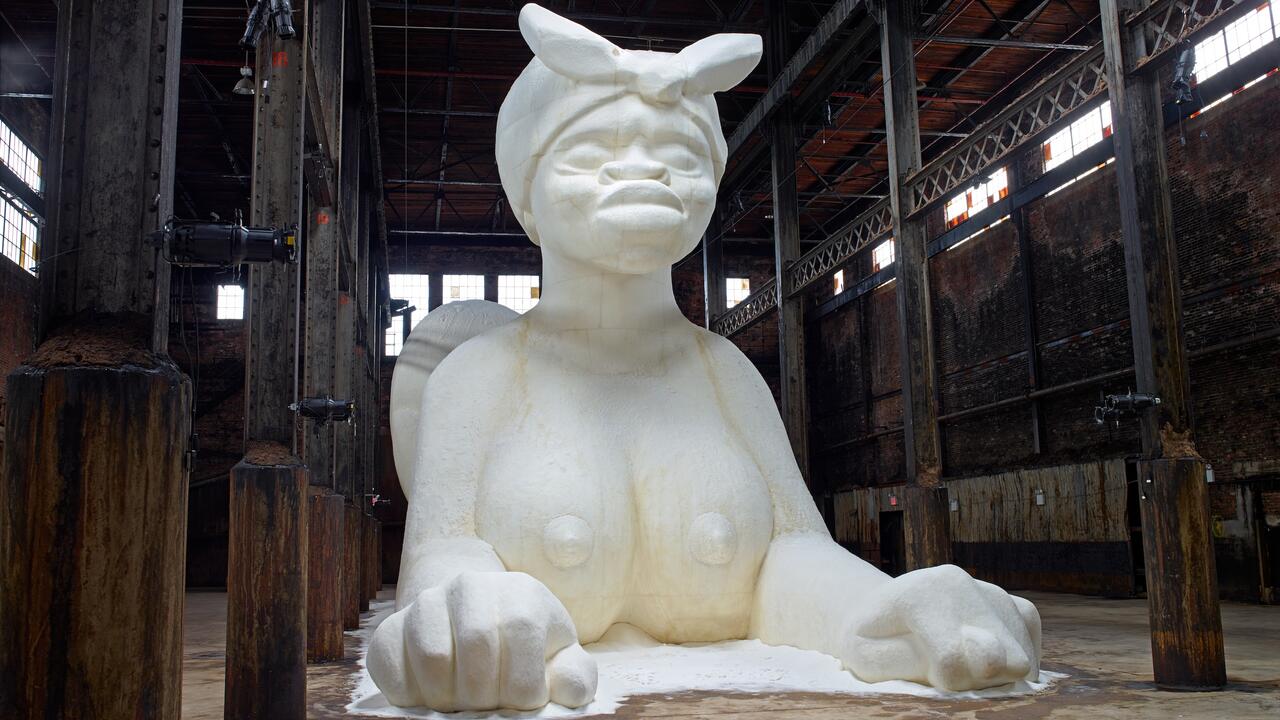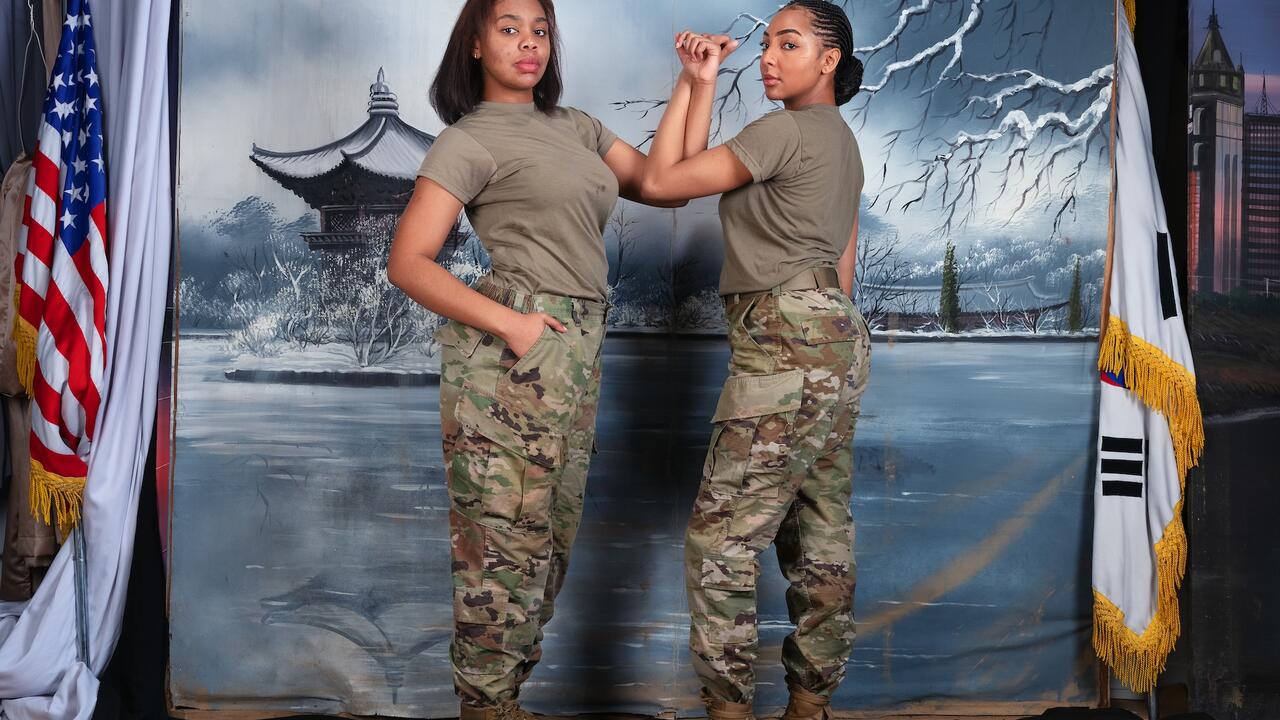14th Istanbul Biennial
Various venues, Turkey
Various venues, Turkey

Anticipation was high for the 14th Istanbul Biennial, not only because of the city’s geopolitical resonance, poised as it is on the fault line dividing Europe and Asia, but also as the first show curated by Carolyn Christov-Bakargiev since her gargantuan and well-received dOCUMENTA (13) in 2012. Including many of the same artists and advisors (all of whom were named as ‘participants’), this biennial’s scale was similarly ambitious, with works by over 80 artists, almost 60 of which were new commissions, dispersed across 36 venues throughout the city and its outlying islands. Given these dimensions and the complex logistics of navigating the narrow alleyways of Istanbul’s downtown Beyoğlu, Old City and Şişli districts, or catching boats up and down the Bosphorus to see works in situ, it was quickly clear that, as with dOCUMENTA (13), a partial experience was all one could hope for.
Another kind of partiality emerged, however, due to the exhibition’s elision of Turkey’s current precarious political situation – news of both escalating violence against Kurdish rebels in the south and boatloads of migrants arriving on Turkish beaches marked the weeks running up to the opening. The unspeakably tragic image of the body of a Syrian toddler washed up on the Turkish coast, which hit the media on the morning of the opening, added unexpectedly grim overtones to the biennial’s title, ‘Saltwater: A Theory of Thought Forms’. The previous biennial, in 2013, demonstrated the difficulties of anticipating and reacting to political developments as they unfold: its plans to weave projects into the city’s public spaces were quickly curtailed as the uprisings and violent crackdowns around Taksim Square and Gezi Park developed. Perhaps learning from this experience, Christov-Bakargiev refrained from directly addressing specific political issues, preferring instead to take a metaphorical or historical approach. In her introductory speech, she declared herself to be a ‘sceptic’ when it comes to human affairs, and quoted Vita Sackville-West’s 1946 poem The Garden: ‘Small pleasures must correct great tragedies, therefore of gardens in the midst of war I bold tell.’ So we are asked to consider pressing current issues through the metaphors of saltwater and waves, knots and thought forms – themes articulated not only through artworks, but also materials drawn from oceanography, neuroscience, theosophy and mathematics, along with the anecdotal tokenism of what Christov-Bakargiev describes in her catalogue essay as ‘some crystals I gathered with a friend at Robert Smithson’s Spiral Jetty.’

As for history, the exhibition sidestepped the Kurdish issue and focused instead on the Ottoman Empire’s 1915 massacre of Armenians, known as the ‘Great Crime’. Commissioned works took up this subject in abandoned garages or dilapidated houses, hotel rooms, disused schools or regular art venues borrowed for the biennial’s two-month duration. Kristina Buch’s two-channel video, Such prophecies we write on banana skins (triangulation of criminal grace) (2015), inspired by the destruction of churches in Eastern Anatolia, digitally staged the explosion of a museum and a mountain, which boomed dramatically in its drab garage setting. Nearby, in Orhan Pamuk’s Museum of Innocence, a couple of elegantly sinuous drawings by Armenian exile Arshile Gorky were sequestered amongst the vitrines of fictitious memorabilia. Francis Alÿs’s The Silence of Ani (2015) called on youth to bring life back to the abandoned city of Ani near the Armenian border. In this short black and white film, young people hidden in the overgrown ruins play miniature flutes to tempt back the departed birds, a lyrical exercise in concise and persuasive storytelling. Iraqi-American Michael Rakowitz’s work The Flesh Is Yours, The Bones Are Ours (2015) was less concise, with its vast collections of annotated artefacts and architectural frottages yoking together the legacies of Armenian craftsmanship, art nouveau plasterwork, the bones of stray dogs stranded on an island at the end of the Ottoman Empire, and the great fires in Istanbul and Chicago in the late 1800s. While Rakowitz’s project filled a whole floor of the now-defunct Galata Greek Primary School, the dispossession of the Armenian population was perhaps most powerfully communicated by the Beyoğlu Holy Trinity Armenian Church Choir, invited by Lebanese artist and curator Haig Aivazian to sing a mournful liturgy, whose doleful strains drifted up the school’s stairwells, stopping visitors in their tracks.
As well as site-specific works created for particular locations, a handful of venues hosted group exhibitions. Along with works by Rakowitz and others in the Greek School was The Salt Traders (2015) by Cairo-born Anna Boghiguian, a sprawling landscape of painted sails, fragments of a wrecked ship, diaristic drawings and liberal piles of salt. (Boghiguian was one of several artists who stayed on message and incorporated salt literally into their works.) A succinct grouping of works at Arter, meanwhile, functioned like a fully independent show. Bringing together early-20th-century amateur photographs of the Northern Lights by Norwegian mathematician Fredrik Carl Mülertz Størmer, a series of 1,001 minute drawings in fine-penned ink by artist Christine Taylor Patten, and paintings and notebooks by psychoanalyst and feminist academic Bracha L. Ettinger, it focused on form – whether physical phenomena, organic occurrence or psychological expression – as a prompt for rigorous analysis.
A substantial portion of the exhibition was housed in the warehouse-turned-museum Istanbul Modern, but this lacklustre grouping was slim on either productive juxtaposition or thematic extrapolation. A section within it called ‘The Channel’ aimed to play a similar role to dOCUMENTA (13)’s tightly orchestrated ‘Brain’. Though full of undeniably fascinating material – a Charles Darwin first edition, examples of art nouveau glassware, early-20th-century neurological drawings and video footage of underwater rivers, along with the extraordinary proto-abstract, colour-coded ‘Thought Forms’ by theosophists Annie Besant and Charles W. Leadbeater – its jumble of disparate elements felt like a collation of loose threads that were left hanging rather than coherently knotted together. This was less a ‘Channel’ through which ideas could flow, gathering momentum, than a still, reflective pool.

Christov-Bakargiev’s ‘saltwater’ theme came into its own during the exhilarating 90-minute boat ride down the Bosphorus to the island of Büyükada, host to several commissioned projects that drew variously on the evocative potential of their locations. Ed Atkins’s latest film, Hisser (2015), projected simultaneously on two floors of a dilapidated, partially furnished villa, performed a kind of haunting. His now-familiar avatar – depicted in a generic, digitally rendered bedroom that was consciously at odds with the ruin of its exhibition environment – looks more beaten down by his digital existence in every iteration. In another abandoned mansion down the road, Susan Philipsz’s latest piece, Elettra (2015), broadcast mysterious sounds plumbed from the depths of the Ligurian coast. Further on, after trekking through the ruins of what was Leon Trotsky’s residence during the years he spent in exile on the island, beating back undergrowth on the steep path down to the water’s edge, was the unlikely apparition of a gathering of life-size animals in white fibreglass, laden with heaps of organic material and waiting on concrete pedestals in the lapping waves, as if suddenly released from the ark (Adrián Villar-Rojas’s The Most Beautiful of All Mothers, 2015). Impressive, no doubt, but what this had to do with the exiled revolutionary, or Turkey for that matter, remained a matter of speculation. Like the knotty Armenian question, Trotsky’s presence was registered as narrative incident but not extrapolated, while the picturesque locations often seemed a troublesome distraction.
That Christov-Bakargiev designated herself the ‘drafter’ of this exhibition, rather than its curator, is telling, as it did indeed seem like a first draft. Though she talked up the ‘slowing down of the experience of art’ that the widespread venues necessitate, time seemed to be exactly what was lacking here, both to shape the exhibition’s chosen themes and to allow individual commissioned works to evolve. Pierre Huyghe was perhaps the only artist to address this idea directly. He proposed sinking a concrete stage to the bottom of the Sea of Marmara, to be developed by aquatic life forms over the coming months or years, according to their own timescale. For the visitor, it is an act of faith to imagine what might transpire down there on the seabed, marked only by buoys on the water’s surface. Perhaps Huyghe took the notion of time too much to heart: at the time of the exhibition opening, he had not yet installed his work.





















